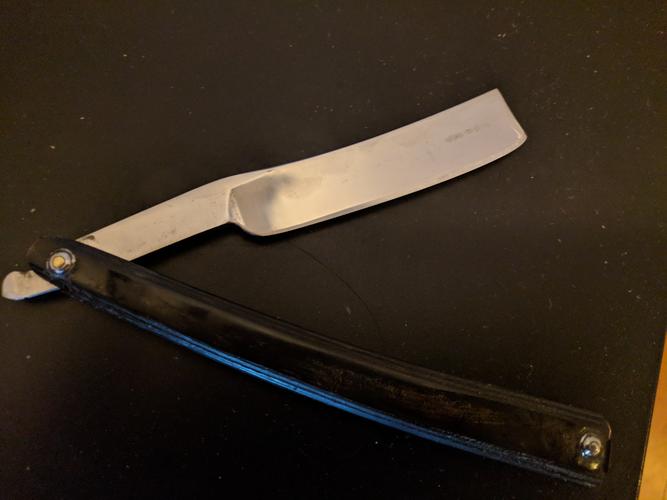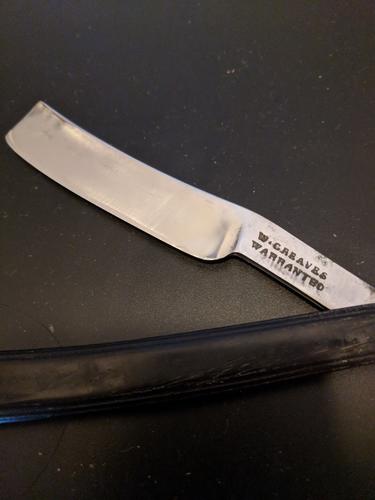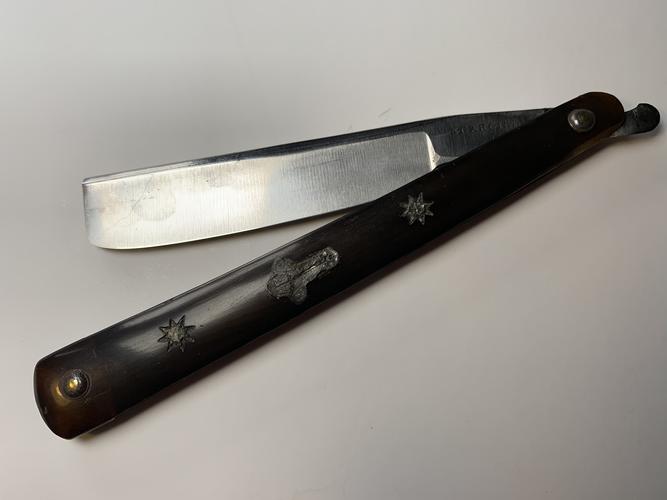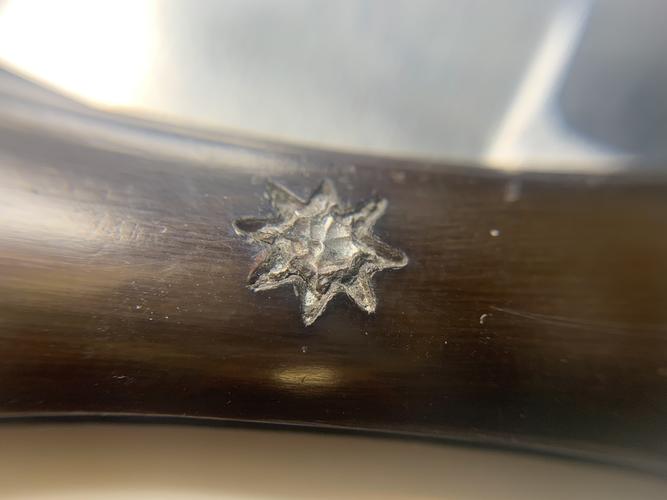Results 791 to 800 of 927
Thread: The Stub-Tailed Shavers
-
05-04-2018, 08:05 PM #791
-
11-27-2018, 09:38 PM #792Senior Member

- Join Date
- Mar 2018
- Location
- Toronto
- Posts
- 216
Thanked: 15
oh man i LOVE old razors. This one is the pride and joy for my collection. Right now getting "touched up" by someone who can hone better than me locally. (I miss it already). Early 1800's W. GREAVES


P.S: I'm always on the lookout for old razors if anyone has any information on acquiring any. They're just SO much more comfortable to shave with, to me. My goal is to find something from the 1700's for my rotation.
-
The Following User Says Thank You to Tjh For This Useful Post:
Geezer (11-27-2018)
-
05-25-2019, 02:00 PM #793

Question: Is the metal part of the bottom of the handle of English razors lead or tin (or both)?
-
05-25-2019, 07:18 PM #794
-
-
05-25-2019, 09:38 PM #795

The scale inlays on this 1820's Thomas Scargill razor are exhibiting classic signs of tin pest.


My understanding is that the alloy of tin used in Britannia metal would be considerably less likely to exhibit tin pest. Regular pewter, I'm less certain about. So while it's difficult to be sure precisely what was used in old razors, it is possible to be certain it included a lot of tin.
Here are some time-lapse videos of tin converting from one allotrope to another from temperature.
-Zak Jarvis. Writer. Artist. Bon vivant.
-
-
05-25-2019, 11:50 PM #796

Har!!! History's greatest wardrobe malfunction!
I love it! A friend of mine is a button collector. Seemed silly to me until he started lining up buttons and explaining the history to me. He made a joke at my expense while referencing "the buttons on Napoleons army's jackets".
He never explained it, but now I know!
That is so strange about tin.. Usually things are more "stable" at low temps.
 “You must unlearn what you have learned.”
“You must unlearn what you have learned.”
– Yoda
-
The Following User Says Thank You to MikeT For This Useful Post:
Voidmonster (05-26-2019)
-
05-26-2019, 12:12 AM #797
-
05-26-2019, 04:21 AM #798

I wonder if it loses weight when converted back and forth..?
If it is stabilized when mixed with other metals or minerals.?
Gonna have to do a search on it.
In the video, the transformation began, and moved from one point.. if sealed, would it prevent the beginning of the process?“You must unlearn what you have learned.”
– Yoda
-
05-26-2019, 06:16 AM #799

It should remain the same mass -- it's just a rearrangement of the atoms that are there. Some sources claim alloying with copper (as it was with Britannia metal) reduce or eliminate the conversion.
My understanding of the process is that sealing wouldn't help. It's not atmospheric, but thermal.
THAT SAID... I cannot think of ever having seen the part of a wedge inside the scales that's doing this, so it's a really good question!
I suppose it's possible that it happens because of an interaction between the oxidation product from atmospheric exposure and being cooled below 15 degrees centigrade.-Zak Jarvis. Writer. Artist. Bon vivant.
-
The Following User Says Thank You to Voidmonster For This Useful Post:
MikeT (05-26-2019)
-
05-26-2019, 11:44 AM #800

since pewter is mostly tin i would presume that the problem is only with pure tin? I still find it mind boggling that 59 f is as cold as it needs to go to react.


 2492Likes
2492Likes LinkBack URL
LinkBack URL About LinkBacks
About LinkBacks

 Indeed!
Indeed! 







 Reply With Quote
Reply With Quote

